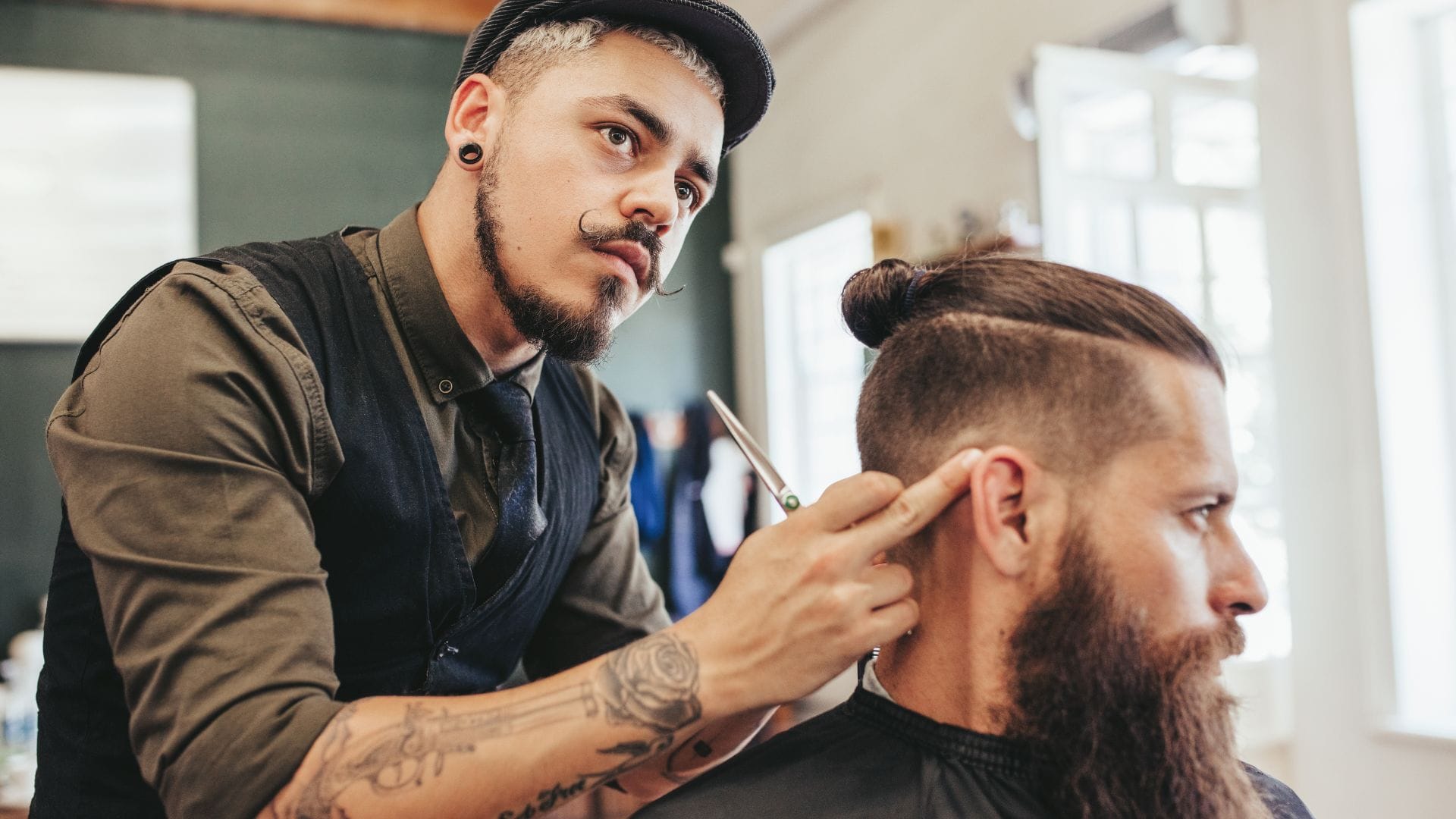Line up haircuts are more than a grooming trend; they’re a statement of style and precision that requires skill and attention. For barbers, mastering the line-up haircut can elevate your craft and set you apart in a competitive industry. This guide will walk you through the essential dos and don’ts to ensure your line up haircuts are always top-notch.
1 Do: Master the Art of Precision in Line Up Haircuts
Precision is paramount in creating a clean and sharp line up haircut. As a barber, investing time in honing your skills is crucial for mastering this art form. Begin by practicing maintaining a steady hand and developing a keen eye for detail, as these are essential tools for achieving the flawless lines that define a successful line up.
Professional-grade clippers and trimmers are your best allies in this quest for precision. Ensure that your equipment is always well-maintained and sharp, as this minimizes the risk of uneven cuts and maximizes the crispness of your lines. When working on a client, take your time to carefully outline and refine the hairline, temples, and nape, paying close attention to symmetry and straightness.
Remember, a flawless line up not only accentuates the overall haircut but also enhances the client’s facial features, giving them a polished and groomed appearance. This attention to detail is what keeps clients returning and recommending your services, establishing you as a top-tier barber in the competitive landscape of New York.
2 Do: Proper Tool Maintenance for a Perfect Line Up
Your tools are your best friends. Regularly clean and oil your clippers and trimmers to maintain their efficiency and longevity. Sharp blades contribute to cleaner cuts and reduce the risk of skin irritation for your clients. A well-maintained toolset is integral to delivering the best line up haircut in New York.
Begin by establishing a routine cleaning schedule for your clippers and trimmers. After each use, remove any hair and debris from the blades and guards using a small brush or compressed air. This step prevents buildup that can dull the blades and hinder their performance. Follow up by disinfecting the blades with a spray or solution specifically designed for barber tools, ensuring you kill any bacteria and maintain hygiene standards.
Oiling the blades is another essential maintenance task. Apply a few drops of clipper oil to the blades while the tool is running, allowing the oil to spread evenly and reduce friction. This not only prolongs the life of the blades but also ensures smooth operation during haircuts. Be mindful not to over-oil, as excess lubricant can attract more hair and dirt.
In addition to routine cleaning and oiling, regularly check the sharpness of your blades. Dull blades can pull on hair and cause discomfort, leading to an unpleasant experience for your clients. Replace or sharpen your blades as needed to maintain optimal performance. Some barbers also find it helpful to have extra sets of blades and guards on hand to swap out during busy periods, ensuring minimal downtime and continuous precision.
Invest in high-quality tools and consider professional servicing when necessary. A trusted professional can perform thorough maintenance, such as adjusting blade alignment and deep cleaning, to keep your equipment in peak condition. Remember, the condition of your tools directly impacts the quality of your work, so prioritize their upkeep just as you would your techniques.
Ultimately, proper tool maintenance is not just about preserving your equipment; it’s about prioritizing the client experience. Clean, efficient, and sharp tools lead to cleaner cuts, reduced irritation, and happier clients who appreciate your dedication to excellence. By committing to regular maintenance, you’ll be well on your way to delivering the best line-up haircut in New York and earning a reputation as a top-tier barber in the industry.
3. Do: Understanding Head Shapes for Custom Line Ups
Understanding head shapes is a fundamental skill for delivering custom line ups that elevate your client’s overall appearance. Every client’s head shape is unique, necessitating a tailored approach rather than a one-size-fits-all method. By taking the time to study and recognize various head shapes, you can fine-tune your techniques to enhance each client’s natural features.
Start by familiarizing yourself with common head shapes, such as oval, round, square, and diamond. Each shape has its own characteristics that can influence the ideal line up. For instance, oval-shaped heads typically have balanced proportions, lending themselves to versatile styles. In contrast, round-shaped heads might benefit from sharper, more angular lines to add structure and definition.
When assessing a client’s head shape, consider the contours and natural hair growth patterns. Pay attention to the forehead, cheekbones, jawline, and the back of the head. These details can guide you in creating a symmetrical and flattering line up that complements the client’s facial structure.
Effective communication with your client is also crucial. Discuss their preferences and any concerns they may have about their hair or head shape. This dialogue not only builds trust but also provides you with insights to refine your approach. Demonstrating that you understand and respect their unique attributes will enhance their confidence in your essential skills.
Customization ensures your clients leave your chair looking and feeling their best. A well-executed line up that takes head shape into account can accentuate the client’s features, resulting in a polished and professional appearance. By mastering this aspect of barbering, you’ll stand out as a detail-oriented professional dedicated to achieving optimal results for each individual.
Understanding head shapes and applying this knowledge to your line ups will solidify your reputation as a skilled and considerate barber. Your commitment to customizing styles based on individual needs will set you apart in a competitive industry and help you build a loyal clientele who appreciate the personal touch you bring to your craft.
4 Do: Maintaining a Clean and Organized Workspace
A clean workspace not only reflects your professionalism but also ensures a hygienic environment for your clients. The importance of maintaining cleanliness and organization in your barber shop cannot be overstated. Regularly sanitizing your tools, chairs, and surfaces is a crucial practice in preventing the spread of germs and bacteria. This includes disinfecting combs, scissors, clippers, and any other instruments after each use. Keeping your station free from clutter not only enhances your efficiency but also creates a welcoming atmosphere for your clients.
An organized space fosters a smoother workflow, allowing you to locate tools and products swiftly, thereby reducing downtime between clients. It also demonstrates attention to detail and respect for your profession. Clients are likely to feel more comfortable and confident in an environment that is visibly clean and well-maintained. Making a routine of wiping down surfaces, sweeping floors, and managing waste will go a long way in showcasing your dedication to both cleanliness and client satisfaction. By prioritizing a spotless and orderly workspace, you reinforce your commitment to delivering high-quality service in a safe and professional setting.
5 Do: Engaging with Clients and Understanding Their Needs
Active engagement with your clients helps build trust and loyalty. One of the most effective ways to engage is to ask open-ended questions about their preferences and listen attentively to their responses. This initial conversation shouldn’t be rushed – it’s your opportunity to gather insights into their likes, dislikes, and expectations for mens haircut or grooming service.
Understanding their needs allows you to tailor the haircut to their satisfaction, creating a personalized experience that they’ll appreciate. For example, take note of any specific styles they’ve had previously and whether they wish to maintain that look or try something new. Ask for feedback on past experiences, and be receptive to any suggestions they might offer for improvement. If a client is uncertain about what they want, provide professional advice by suggesting styles that complement their face shape, hair type, and lifestyle.
In addition to discussing styles, delve into their grooming habits and any problems they might face, such as handling cowlicks or managing unruly hair. Recommending the right products and demonstrating simple styling techniques can go a long way in showing your commitment to their overall grooming success.
Furthermore, engaging with clients extends beyond the technical aspects of the service. Building rapport on a personal level by showing genuine interest in their lives can enhance their overall experience. Remembering details from previous conversations, such as their job, hobbies, or family milestones, can help forge a strong connection.
By prioritizing these interactions, you not only ensure a high level of client satisfaction but also cultivate a loyal clientele who value the individualized attention and care you provide. Engaging with clients and understanding their needs is fundamental to offering a service that goes beyond just a haircut, contributing to an enjoyable and fulfilling barbering experience.
1 Don’t: Common Mistakes to Avoid When Performing Line Ups
One common mistake barbers make is not considering the natural hairline of the client. Altering it too drastically can lead to an unnatural appearance and client dissatisfaction. Stick close to the client’s natural hairline and make subtle enhancements rather than major changes.
When performing line ups, it’s crucial to examine the client’s natural hair growth patterns and hairline shape before making any cuts. Overzealous adjustments can result in an asymmetrical look or one that appears artificial. For example, pushing the hairline too far back can create an overly sharp or uneven look, which may be difficult to correct and require weeks of growth to restore.
Moreover, always use precise, controlled movements with your trimmers to maintain consistency. Rushing through the process or using heavy-handed techniques can cause nicks and uneven lines, potentially leading to client discomfort and dissatisfaction.
Additionally, regularly consult with the client during the process. Some clients may have specific preferences or might want to retain certain natural features. Clear communication helps ensure that the end result aligns with their expectations and avoids any unwelcome surprises.
2 Don’t: Over-Trimming or Creating Uneven Lines
It’s easy to get carried away while perfecting those sharp lines, but over-trimming can lead to patchy and uneven results. Less is often more; take your time and trim gradually. Consistent and controlled movements will help you avoid creating uneven lines or bald spots.
When you over-trim, you risk creating areas that are noticeably indented or thinner compared to the surrounding hair, which can detract significantly from an otherwise well-executed haircut. This mistake is particularly evident along the hairline, where precision is paramount. Instead of attempting to achieve perfection in one swift motion, approach the trimming process with patience. Make small, incremental adjustments and frequently step back to assess your progress from different angles.
Furthermore, using the appropriate tool for the job can mitigate the risk of over-trimming. Ensure that your trimmer is properly maintained, with sharp blades that allow for clean, controlled cuts. Dull or mismatched equipment can contribute to uneven lines and patchiness, as you may be forced to press harder or make multiple passes to achieve the desired effect.
Another critical aspect to consider is the client’s hair texture and density. Coarser or curly hair types can be more challenging to trim evenly without causing unintended gaps. Adjust your trimming technique according to the hair’s natural behavior, and always err on the side of caution. Light, meticulous trimming will yield a more uniform and aesthetically pleasing result.
Finally, constant communication with your client is key. Regularly check in with them to ensure they are comfortable with the direction you’re taking and to gather feedback on the progress. This collaborative approach not only helps in achieving a satisfactory result but also builds trust and encourages repeat business.
3 Don’t: Rushing Through Appointments – Quality Over Quantity
While it’s tempting to squeeze in as many appointments as possible, rushing through a line-up can compromise quality. In the hustle to accommodate more clients, you may overlook key details that contribute to a polished and precise haircut. A crowded schedule can lead to shortcuts and a lack of attention to individual client needs, which ultimately impacts the outcome.
To avoid this pitfall, it’s essential to schedule enough time for each client. Allocate adequate time slots that allow you to focus on the intricate details of a line-up, such as the symmetry of the hairline, the blend of edges, and the uniformity of the cut. Hasty work can result in uneven lines, missed spots, and a general lack of refinement.
Precision and client satisfaction should always take precedence over quantity. Taking the time to deliver a meticulous and well-executed haircut speaks volumes about your skills and professionalism. This approach not only ensures that each client leaves your chair completely satisfied, but it also builds a reputation for high-quality service.
In the long run, a strong reputation for excellence can lead to more referrals and repeat business, which is far more beneficial than the short-term gains of hurried appointments. Strive for quality over quantity, and your commitment to precision will ultimately enhance your standing as a skilled and professional barber.
4 Don’t: Neglecting Hygiene Practices
Hygiene is non-negotiable in the barbering profession, and maintaining a strict regimen of cleanliness is crucial to ensuring a safe and comfortable experience for each client. First and foremost, always use clean capes, towels, and tools for every individual who sits in your chair. This practice helps to prevent the spread of infections and skin irritations, projecting an image of professionalism and care.
Regularly sterilize and disinfect all combs, scissors, clippers, and any other tools that come into direct contact with clients. Implementing a routine of sanitizing these instruments not only complies with health regulations but also conveys a commitment to client safety. Additionally, keep your workstation tidy and organized by wiping down surfaces and properly disposing of hair clippings after each haircut.
Neglecting hygiene can lead to severe consequences, both medically and professionally. Clients who suffer adverse reactions due to poor sanitation are unlikely to return and may share their negative experiences with others, thereby tarnishing your reputation. Word-of-mouth is powerful in the barbering industry, and a commitment to impeccable hygiene can significantly enhance your standing within the community.
Furthermore, maintaining personal hygiene is equally essential. Ensure that you wash your hands thoroughly before and after each appointment, and consider wearing gloves when necessary to provide an added layer of protection. A clean and well-groomed appearance reinforces the trust clients place in your services and exemplifies the overall standards of your practice.
5 Don’t: Forgetting to Ask for Feedback
Feedback is invaluable for growth. Engaging with clients regarding their experience is a crucial step that many barbers overlook. After completing a lineup or any other service, take a moment to ask your clients for their honest opinions. This practice accomplishes several important objectives.
Firstly, it helps you identify areas where you can improve. Constructive feedback provides insights that you might not have considered, from the comfort of the seating arrangement to the precision of your cutting technique. Regularly incorporating client suggestions can lead to constant refinement of your skills and overall service.
Secondly, asking for feedback shows clients that you value their input and are committed to delivering the best possible experience. It fosters a sense of collaboration and mutual respect, which can strengthen client loyalty. People appreciate feeling heard, and their willingness to share their thoughts can be a testament to their trust in your professionalism.
In addition, regularly seeking feedback provides an opportunity to address any concerns on the spot before they escalate. It ensures that minor issues do not become significant problems and that clients leave your chair satisfied. A simple question like, “Is there anything else I can do for you?” can open the door to valuable insights and leave a lasting positive impression.
Lastly, consistently collecting client feedback can enhance your service quality over time. By analyzing patterns and recurring suggestions, you can make informed changes to your practices, ultimately leading to higher client satisfaction and a stellar reputation in the barbering community.
Incorporating feedback into your routine is a small, yet significant step that can transform your client interactions and elevate your business. Never underestimate the power of a friendly query about your client’s experience; it can lead to continuous improvement and a thriving clientele base.
Conclusion
Mastering the line up haircut requires a blend of skill, precision, and customer engagement. By adhering to these dos and don’ts, you can ensure that your line ups are consistently excellent, setting you apart as a top barber in New York. Remember, the key to success is continuous learning and adaptation to meet your clients’ evolving needs.
Ready to take your barbering skills to the next level? Start implementing these tips today and watch your client base grow. For more personalized advice and training, feel free to reach out to us or visit our website.


